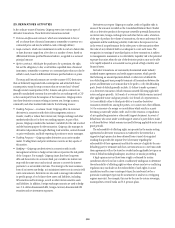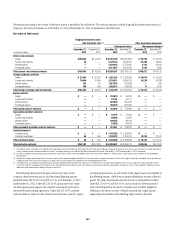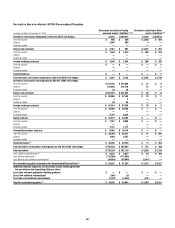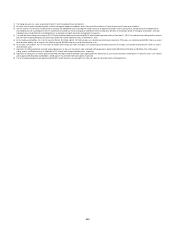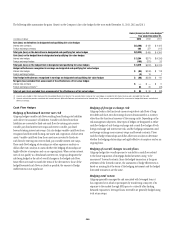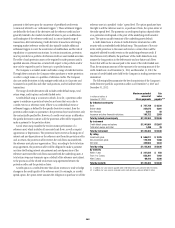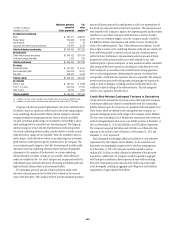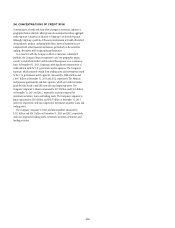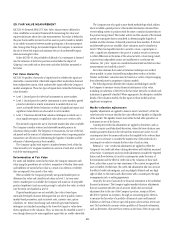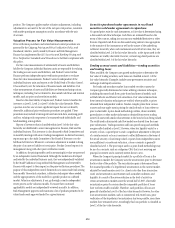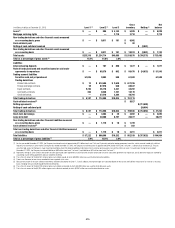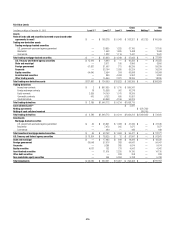Citibank 2013 Annual Report Download - page 286
Download and view the complete annual report
Please find page 286 of the 2013 Citibank annual report below. You can navigate through the pages in the report by either clicking on the pages listed below, or by using the keyword search tool below to find specific information within the annual report.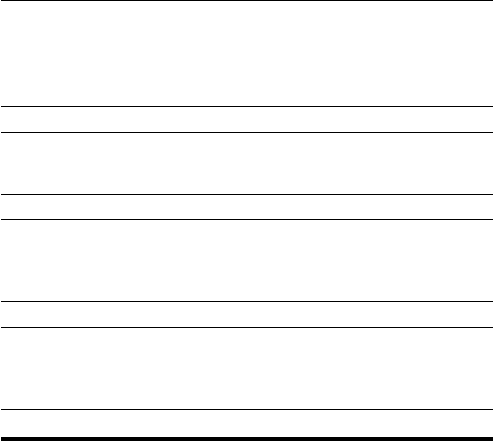
268
payments to the buyer upon the occurrence of predefined credit events
(commonly referred to as “settlement triggers”). These settlement triggers
are defined by the form of the derivative and the reference credit and are
generally limited to the market standard of failure to pay on indebtedness
and bankruptcy of the reference credit and, in a more limited range of
transactions, debt restructuring. Credit derivative transactions referring to
emerging market reference credits will also typically include additional
settlement triggers to cover the acceleration of indebtedness and the risk of
repudiation or a payment moratorium. In certain transactions, protection
may be provided on a portfolio of reference credits or asset-backed securities.
The seller of such protection may not be required to make payment until a
specified amount of losses has occurred with respect to the portfolio and/or
may only be required to pay for losses up to a specified amount.
The Company is a market maker and trades a range of credit derivatives.
Through these contracts, the Company either purchases or writes protection
on either a single name or a portfolio of reference credits. The Company
also uses credit derivatives to help mitigate credit risk in its Corporate and
Consumer loan portfolios and other cash positions, and to facilitate client
transactions.
The range of credit derivatives sold includes credit default swaps, total
return swaps, credit options and credit-linked notes.
A credit default swap is a contract in which, for a fee, a protection seller
agrees to reimburse a protection buyer for any losses that occur due to
a credit event on a reference entity. If there is no credit default event or
settlement trigger, as defined by the specific derivative contract, then the
protection seller makes no payments to the protection buyer and receives only
the contractually specified fee. However, if a credit event occurs as defined in
the specific derivative contract sold, the protection seller will be required to
make a payment to the protection buyer.
A total return swap transfers the total economic performance of a
reference asset, which includes all associated cash flows, as well as capital
appreciation or depreciation. The protection buyer receives a floating rate of
interest and any depreciation on the reference asset from the protection seller
and, in return, the protection seller receives the cash flows associated with
the reference asset plus any appreciation. Thus, according to the total return
swap agreement, the protection seller will be obligated to make a payment
any time the floating interest rate payment and any depreciation of the
reference asset exceed the cash flows associated with the underlying asset. A
total return swap may terminate upon a default of the reference asset subject
to the provisions of the related total return swap agreement between the
protection seller and the protection buyer.
A credit option is a credit derivative that allows investors to trade or hedge
changes in the credit quality of the reference asset. For example, in a credit
spread option, the option writer assumes the obligation to purchase or sell the
reference asset at a specified “strike” spread level. The option purchaser buys
the right to sell the reference asset to, or purchase it from, the option writer at
the strike spread level. The payments on credit spread options depend either
on a particular credit spread or the price of the underlying credit-sensitive
asset. The options usually terminate if the underlying assets default.
A credit-linked note is a form of credit derivative structured as a debt
security with an embedded credit default swap. The purchaser of the note
writes credit protection to the issuer and receives a return that could be
negatively affected by credit events on the underlying reference credit. If
the reference entity defaults, the purchaser of the credit-linked note may
assume the long position in the debt security and any future cash flows
from it but will lose the amount paid to the issuer of the credit-linked note.
Thus, the maximum amount of the exposure is the carrying amount of the
credit-linked note. As of December 31, 2013 and December 31, 2012, the
amount of credit-linked notes held by the Company in trading inventory was
immaterial.
The following tables summarize the key characteristics of the Company’s
credit derivative portfolio as protection seller as of December 31, 2013 and
December 31, 2012:
In millions of dollars at
December 31, 2013
Maximum potential
amount of
future payments
Fair
value
payable (1)(2)
By industry/counterparty
Bank $ 727,748 $ 6,520
Broker-dealer 224,073 4,001
Non-financial 2,820 56
Insurance and other financial institutions 188,722 2,059
Total by industry/counterparty $1,143,363 $12,636
By instrument
Credit default swaps and options $1,141,864 $12,607
Total return swaps and other 1,499 29
Total by instrument $1,143,363 $12,636
By rating
Investment grade $ 546,011 $ 2,385
Non-investment grade 170,789 7,408
Not rated 426,563 2,843
Total by rating $1,143,363 $12,636
By maturity
Within 1 year $ 221,562 $ 858
From 1 to 5 years 853,391 7,492
After 5 years 68,410 4,286
Total by maturity $1,143,363 $12,636
(1) In addition, fair value amounts payable under credit derivatives purchased were $28,723 million.
(2) In addition, fair value amounts receivable under credit derivatives sold were $26,673 million.


